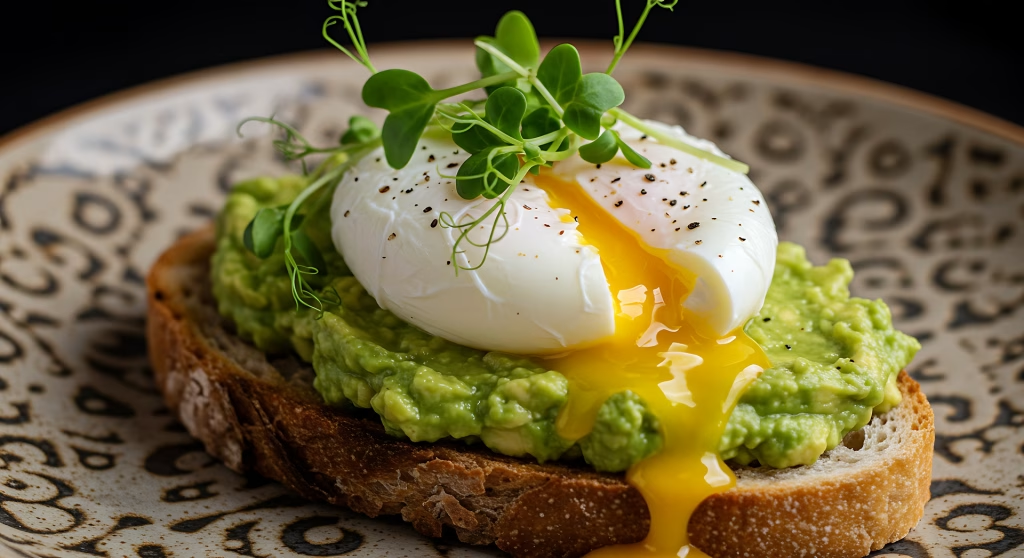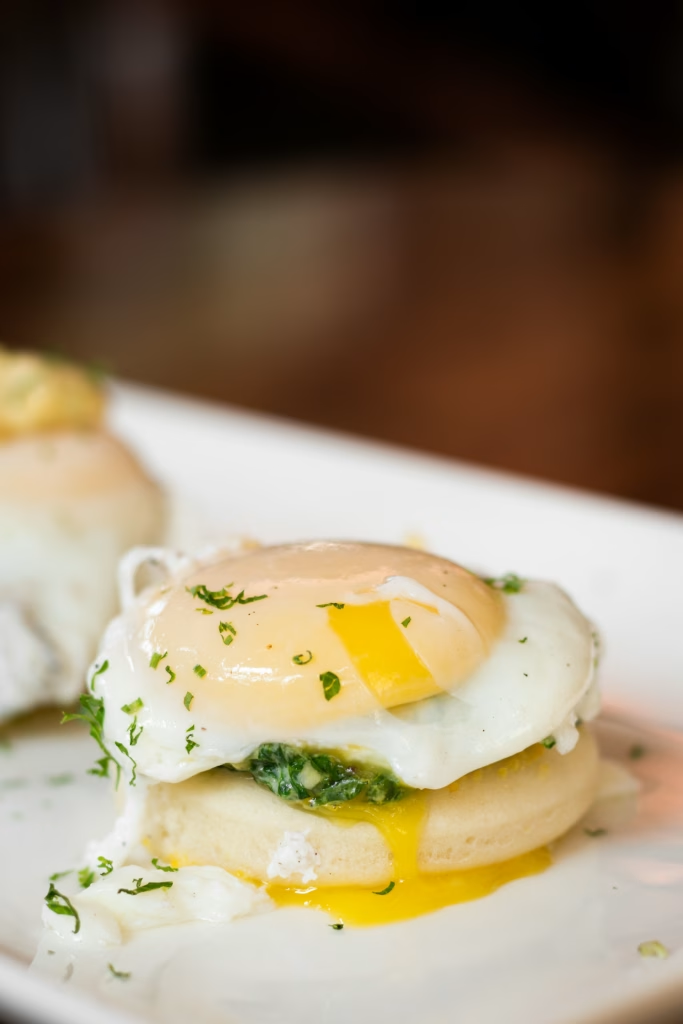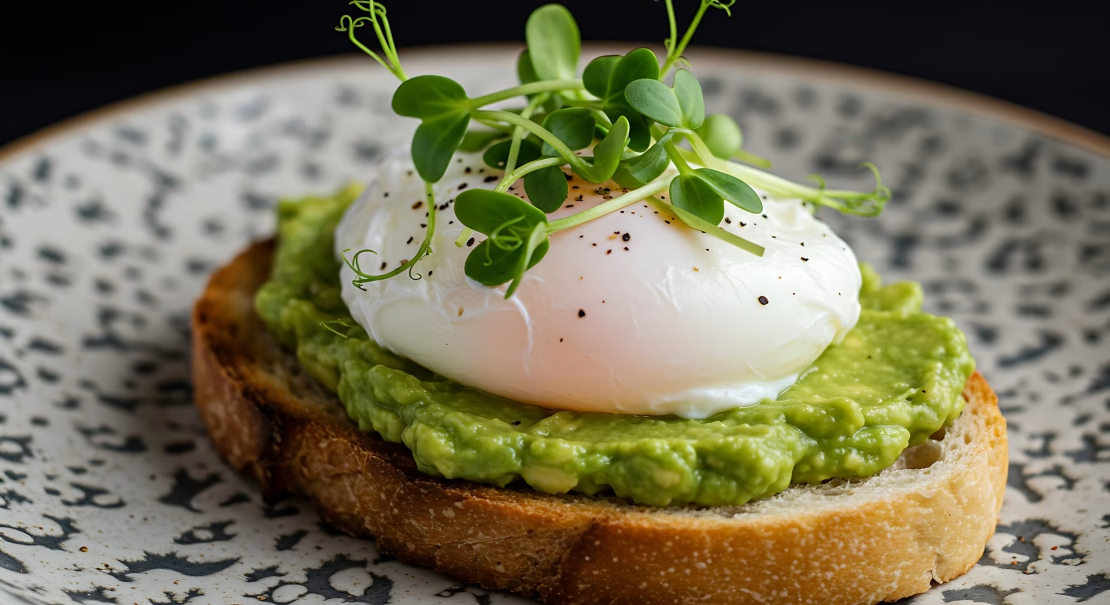Imagine starting your day with a plate of perfectly poached eggs, the whites firm and the yolks oozing gold.
Poached eggs are a culinary delight that, when done right, elevates a simple breakfast to a gourmet experience. In this comprehensive guide, we’ll unravel the secrets to achieving poached egg perfection. For those who love a good breakfast or brunch, learning how to make poached eggs is essential. Their creamy yolk and tender whites make them a delectable addition to toast, salads, and even pastas.
While they may seem tricky to prepare, with a little practice and patience, you’ll be poaching eggs like a pro in no time!
Table of Contents
Ingredients
- 2 Fresh Eggs
- 1 Tsp of Vinegar
- Salt and Pepper to Taste
Serves: 1 person
Estimated Time: 15 Minutes
Step-by-Step Preparation
- Water Preparation: Start by filling a small, deep saucepan with water until it is about three-quarters full. The depth is important as it helps the egg maintain its shape.
- Heat the Water: Bring the water to a gentle simmer over medium heat. You want to see small bubbles rising to the surface, but not a vigorous boil.
- Add Vinegar: Add in a teaspoon of vinegar. This is a secret trick used by chefs worldwide – the vinegar helps to coagulate the egg white faster, ensuring a neater shape.
- Crack the Egg: Meanwhile, crack one egg into a small cup or bowl. This will make it easier to gently slip the egg into the simmering water.
- Gently Lower the Egg into the Water: Create a gentle whirlpool in the water by stirring it with a spoon in one direction. Slowly and gently, slip the egg into the middle of the whirlpool. The swirling water will help the egg white wrap around the yolk, creating a neat package.
- Cook the Egg: Allow the egg to cook for about 3-4 minutes for a runny yolk, 4-5 minutes for a yolk that is still soft but not runny, and 8-9 minutes for a hard yolk.
- Remove and Drain: Using a slotted spoon, gently lift out the poached egg. Let it drain on a paper towel to remove excess water.
- Season and Serve: Season the poached egg with a pinch of salt and pepper to taste. It’s now ready to serve on toast, salad, or any other dish you fancy.
Repeat the process for the second egg, or more if you’re cooking for more people.

Nutritional Facts
Each poached egg contains roughly:
- Calories: 68
- Protein: 5.5g
- Fat: 4.7g
- Carbohydrates: 0.6g
Poached eggs are a versatile and nutritious addition to many dishes. Despite seeming difficult, they are actually quite simple to make once you’ve mastered the technique.
Just remember, practice makes perfect!
History of Poached eggs
Poached eggs have a rich history dating back centuries, with origins traced to ancient Rome and Greece. The method gained popularity in medieval Europe, often featured in noble banquets.
The delicate preparation technique evolved through the centuries, becoming a staple in various cultures worldwide. In the 19th century, renowned chefs like Auguste Escoffier elevated poached eggs to gourmet status.

Today, poached eggs are celebrated for their simplicity, health benefits, and versatility, making them a beloved dish enjoyed across diverse culinary landscapes.
Why Choose Poached Eggs?
Health benefits of poached eggs
Poaching is a cooking method that requires no added fats, making it an excellent choice for those watching their calorie intake. Poached eggs retain more nutrients compared to other cooking methods, preserving their natural goodness.
Versatility in recipes
Beyond the classic breakfast plate, poached eggs can be incorporated into various dishes. From salads to sandwiches, their velvety texture and rich flavor enhance a wide range of recipes.
Presentation and Serving Suggestions
Experiment with plating techniques to elevate the visual appeal of your poached eggs. Pair them with smoked salmon, avocado, or hollandaise sauce for a luxurious touch.
Poached Eggs in Different Cuisines
Explore global variations in poached egg preparation, from the Japanese “onsen tamago” to the Mexican “poached eggs in salsa verde.” Embrace diverse flavors and techniques.
Poached Eggs Beyond Breakfast
Poached eggs are not confined to morning meals. Incorporate them into lunch and dinner recipes, such as salads, grain bowls, and pasta dishes. The options are endless.
Health Conscious Choices
Poached eggs fit into various dietary plans, offering a protein-packed, low-calorie option. Whether you’re following a keto, paleo, or balanced diet, poached eggs can be a nutritious addition.
Experiment, enjoy, and savor the perfection of a well-poached egg.
FAQs about Poached Eggs
1. Can I use vinegar in poaching liquid?
Yes, vinegar helps coagulate the egg whites, resulting in a neater poach.
2. How do I avoid overcooking the yolk?
Monitor the poaching time closely. Three minutes for a runny yolk, five minutes for a firmer one.
3. Can I poach eggs in advance for a crowd?
Yes, poach eggs slightly under your desired doneness, then shock them in ice water. Reheat before serving.
4. Why did my poached eggs spread in the water?
Check the freshness of your eggs and maintain a steady simmer to prevent the whites from dispersing.
5. Can I freeze poached eggs?
While not ideal, you can freeze poached eggs. Reheat gently to avoid overcooking.
In mastering the art of poached eggs, you open the door to a world of culinary possibilities. From breakfast to dinner, poached eggs bring elegance and flavor to every dish.


